Music Reviews
100 YOUNG MUSICIANS SET TO WOW BUXTON - Nottingham Music Service
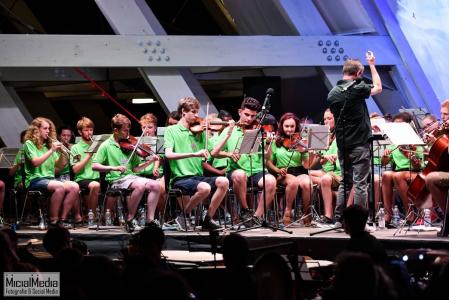
If ever a show did what it said on the tin, then this was it! Nottingham Music Service had organised a summer school for their Robin Hood Youth Orchestra and their counterparts in Karlsruhe, Germany. The cities are twinned and young musicians get together regularly. Apart from rehearsals the NMS was looking for some opportunities for public performances and we were lucky that they chose Buxton Fringe for one of them.
Around about 4pm 101 musicians started a procession all around the Pavilion Gardens and for a full 30 minutes they played some samba and marching tunes on brass and woodwind instruments. From 5.00pm the 50-strong Robin Hood Orchestra - a mixture of strings, brass and percussion played a set including such crowd pleasers as Hawaii 5 - 0.
After a break for the International Festival’s excellent Song At Six the Karlsruhe Orchestra took to the stage. This brass and woodwind ensemble royally entertained a crowd of 200 for 40 minutes. Their programme included Sunny Side of the Street, a Frank Sinatra medley, and extracts from Aladdin.
Their conductor thanked their English friends for the loan of three players to cover for sick absentees. He also observed that the relationship between the two orchestras was “the opposite of Brexit” and received spontaneous and vigorous applause.
The musicians were, in every way, a credit to their cities, families and nations. It was a privilege and a blessing to be able to welcome them to Buxton. They play on the evening of 16 July in the Peak Cavern.
Keith Savage
ACAPPELLA AND CAKE - Ordsall Acappella Singers
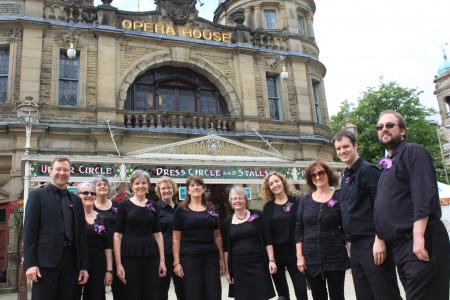
This is the sixth year that the Ordsall Acappella Singers have joined us for the Fringe in Buxton and I doubt if they have been in better voice. (And the promise was that the second performance at St Mary’s in the afternoon would be better). They rehearse every Tuesday - with 50 singers regularly involved altogether and about 30 were in Buxton today for what is close to the culmination of a year's work.
The programme was mostly a judicious mixture of pop and show tunes beginning with a song by Elbow - a Manchester band when all is said and done - and One day like this was a good choice to convince the audience that this was a choir that was disciplined and passionate.
The programme went on to include Over the rainbow, I say a little prayer - taken briskly, something of an Ordsall trademark; Somewhere Out There featuring a soloist, Amanda.
An arrangement of the poem In Remembrance brought tears to more than one eye and it is a piece that the Singers will be performing at special events in 2018 to mark the centenary of the end of hostilities in the First World War.
Further favourites included I got rhythm, Build me up buttercup and Coldplay’s Fix You. This was taken at a more leisurely pace allowing for layers of sound to be built up. The Singers have a clear majority of female voices but this was a song that the men brought home.
There was also time for a song that required the audience members to stand up and sing - a South African piece that I shall call Throw, Catch.
The programme concluded with a selection of Beatles songs: I Will, Here, there and everywhere, The long and winding road and Here comes the sun.
There is such energy and joy in performances by the Ordsall Acappella Singers that you must be happier for sharing their company.
Keith Savage
ACOUSTIC CONNECTIONS WITH RAINTOWN SEERS - Raintown Seers
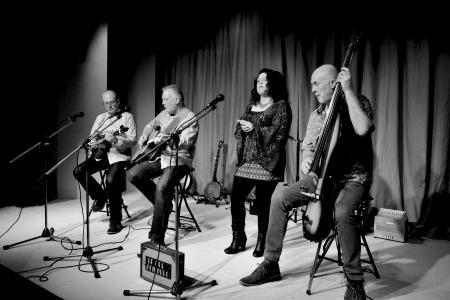
Last year the Raintown Seers played the Barrel Room in the cellars of The Old Hall Hotel and atmospheric though the venue was it did seem that the more generous space of the new Underground allowed the sound to open out, to relax somehow.
The first half of this year’s show revisits some of the “Peak District” songs in their repertoire. Here Come the Brides tells of young British women who met American GIs during the war and then went to the States to marry - only to find that in some cases their man had not made it back. Overexposed also has an American/Second World War connection and is the song of the ghost of the pilot of B29 Superfortress that crashed in the Peaks in 1948.
The Mermaid’s Pool draws on an early 19th century poem to tell of the danger to young men of a siren on Kinder Scout. (Visit the Green Man Galley and find Kate Aimson’s artwork of the same title).
One of the great 20th century stories about the Peak District is of the mass trespass of 1932 which eventually led to the right to roam and the creation of the National Parks. The Seers song about Benny Rothman - with its unusual arrangement - was one of the highlights of the set.
Ewan MacColl did - of course - write The Manchester Rambler but it was two of his other songs that featured in the programme. I’m Champion at Keeping Them Rolling is about the long distance lorry drivers in the days before motorways. The First Time Ever I Saw Your Face is the most beautiful love song in the English language.
The Seers finished up with an original protest song - The Last Boat which reflects on the collapse of the fishing industry in Great Yarmouth, a song that won a prize.
An afternoon with the Raintown Seers (Lisa, Neil, Steve and Don) is very agreeable - sometimes their sound is almost too polished and easy on the ear given the nature of the stories that they are telling - but if modern folk-styled music is what you are looking for this Fringe then you need look no further.
Keith Savage
AMORE! - City of Manchester Opera
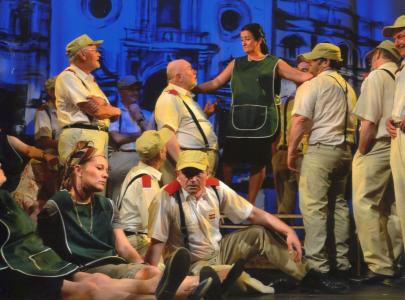
Time for the annual visit to Buxton of this fine opera company. The concert was well attended and the performance was split into two halves which could be roughly classified as ‘heavy’ and ‘light’
The first half featured extracts from various operas by Tchaikovski, Wagner, Verdi and others. These were strikingly presented and despite the love/tragedy and serious themes these were well received.
If the Conductor, Juan Ortuno, ever spends enough time in England (Brexit permitting) then he would do well to retain his Spanish accent because along with his extravagant eyebrow movement it adds to his considerable charisma with which he charmed the audience.
The second half was where the choir could start to play and a number of pieces were acted out including a grumpy landlord (John Piper) from Les Miserables, a stunning version of Summertime from ‘Porgy and Bess’ by Laura Lenaughan but the strongest presence was from Lorna Rushton who moved around the audience and had a voice which, close up, could blow your socks off.
It is a reflection of the strength of the company that they could feature so many fine soloists, many of whom I have not mentioned, throughout the concert.
The faultless accompanist was Jonathan Ellis who has his own piano recital next Saturday in the same venue.
AMORE was a one-off performance so music lovers must wait a year for their next FRINGE show.
Brian Kirman
ANGELS OF THE NORTH - Enkelit
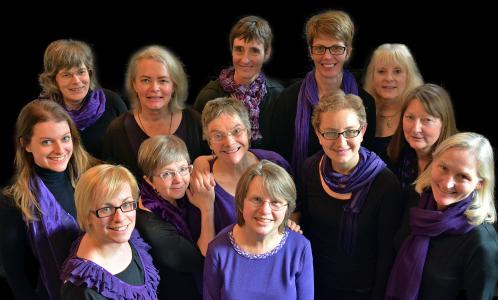
Enkelit is a 15-strong all-woman choir formed in 2003. Drawn from across the north of England the choir rehearses monthly in York with a repertoire drawn principally from Finland - some of it traditional, some more contemporary. The helpful and comprehensive programme notes tell us all that we need to know about the choir and their programme. All that remains is to listen and attend.
This is a disciplined choir and the songs require a range of techniques - from chanting to whispering. This variety was demonstrated early on in the dramatic Etsija, which tells of a young woman, mocked and oppressed, who uses her own resources to combat the problems she faces.
The choir sometimes sings in clusters of 5, sometimes stretched in a line across the church, seeking out different sound shapes to suit the storytelling or the musical arrangement. Superficially there are moments when the choir sound as though the music is sacred but the subject matter is generally that of human struggle either with nature or with other people.
One of the simplest but most affecting songs was Utunen - a modern lament by a woman who seeks to end a destructive relationship. The final piece in the advertised programme - Lemmennosto - required witches to cast spells that incited desire.
The choir is directed by Richard Pomfret and has three further performances in this Fringe. If you have even the slightest interest in choral music I urge you to hear Enkelit. See them twice - they are doing different hour-long programmes. (Tonight's programme is repeated on Saturday and a second set of songs will be heard on Friday and Sunday).
Keith Savage
ANNETTE GREGORY – ELLA CELEBRATING 100 YEARS - Annette Gregory
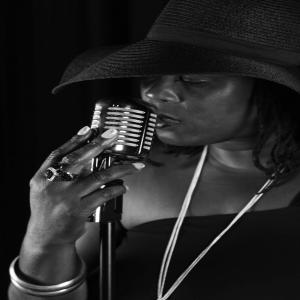
Ella Fitzgerald was born on 25 April 1917. She didn't have the easiest of starts to life - losing both parents and making a living on the streets as a teenager. She had hopes of becoming a dancer but had no training. What she did have was the gift of the smoothest, silkiest voice Jazz has known with the most delicate of touches - to hear Ella was to be kissed on the cheek by the lightest of breezes.
Over her career she recorded 2,000 songs many of which are now Jazz standards - a fact in part due to the Fitzgerald imprimatur.
Annette Gregory has a voice that is naturally lower in pitch than Ella’s and wisely she does not attempt a tribute act that imitates - rather her performance is a celebration of Ella’s legacy and the songs that will be sung and heard for as long as humans live on this planet.
For this gig she was to have been accompanied by a quartet but unfortunately the bassist and sax player were caught up in a traffic standstill on the M6, but the piano (John) and drums (Matt) backing meant the stripped down support ensured that we focused on the songs.
Just as Annette does not try to sound like Ella, neither does she slavishly follow her interpretations. This was strikingly apparent in songs such as “Miss Otis Regrets” and “The Man I Love” (which was more of a rocking blues than the familiar ballad).
Annette's delivery is characterised by controlled, fluent and delicate phrasing and a pair of ballads - “When a Woman Loves a Man” and “Embraceable You” - were particularly pleasing.
Let's hope that Annette and the full quartet make it back to Buxton soon!
Keith Savage
BAKED A LA SKA & LAZLO BABY - Music Events UK
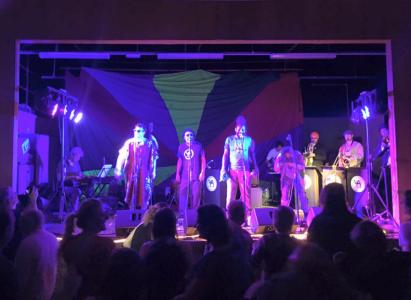
Following a successful and enjoyable refugee benefit gig in New Mills in February, the same team returned to Buxton to entertain audiences on the last full night of the Fringe.
From Eastern Stockport, and influenced by Eastern European music, Lazlo Baby, in the shape of Dave (accordion, guitar, vocals), Sid (bass, guitar, vocals), Jip (clarinet, sax, whistle), John (drums, vocals), and Adrianne (cello), play a mixture of Balkan/gypsy/punk/ska (their description); ramped up folk music!
Dave’s accordion swirls around this big arena, as do the sax and clarinet, anchored by the ballast of a rhythm section conditioning of Adrianne’s cello, Sid’s bass and some dry, hard drumming from John. The 3 singers take us through a set of Balkan/Irish/Jewish folk songs, punctuated by whiplash percussion from John and some roaming bass on behalf of Sid, which contrasts nicely with the swathes of the gentle cello from the elegant Adrianne. I particularly liked the ska influence on the last number, with beautiful clear sax from Jip and Dave’s voice recalling the great Joe Strummer. Oh, and I absolutely loved Mad World!
Lazlo Baby have been together for 8 years and soon will be playing the Glossop Folk Train, Wrex Fest and even Donington – check them out!
Next on the bill are Baked A La Ska. This is a 10 piece band from the M62 corridor, mostly from Manchester, who began life as an April Fool’s joke but have...evolved? Their brief is to do anything in a ska idiom. They perform their own material but also ska versions of, for example, Cars, Starwars, Black Magic Woman, Starman, Abracadrabra…This versatile and unusually attired ensemble (evening dress? Dress?) are absolutely superb and soon have the entire house on their feet. They ramp up the volume considerably with their very strong brass section, which immediately gets under the skin of my companion. The 4 main singers, Frank, (who wanders around the auditorium while performing),Tommy, Kuntri and Robin take turns with a number of songs, the latter providing expertise on harmonica and something which resembles a spirit level in his mouth. And they sing I’m So Tall.
Soon, this excellent band will be playing at the International Manchester Jazz Festival and the Great Northern Ska Festival in Manchester. See them!!
Lastly, congratulations to Rebecca Harmann and the Hummingbird team, who have put this gig together to help the plight of Syrian refugees. It was not as well supported as the earlier fundraiser in February, perhaps owing to competition with other events, but still a very pleasant note on which to close Buxton Fringe 2017.
Ian Hamilton
BAROQUE AT LUNCHTIME - Partita
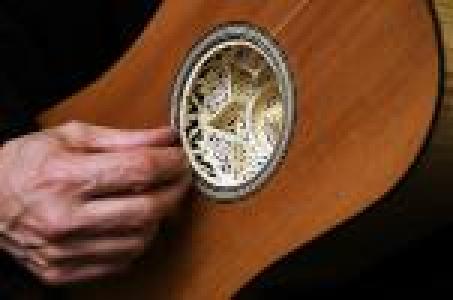
An audience of approximately 60 were enthralled by a wonderful concert given by this ensemble. Many of the audience including myself have heard them perform on other occasions. We were lucky to have a narrator to inform us about the details of the music which was especially useful as many of the songs were in French and Spanish.
Partita have performed in the Fringe for over 20 years and is an ensemble of singers and instrumentalists. Several instruments were played, sometimes individuals played more than one instrument in the same song. I was struck by the intensity of the emotions expressed and the ease they played together moving from one instrument to another.
They performed music from about the year 1000 to the first half of the 18th century. Songs related to English kings was an interesting feature. King Cnut song by Canute is thought to be the first ballad in English and was thought to be inspired by the great church at Ely. Je nun hons is a medieval piece lamenting that Richard has been left in prison and not ransomed by his friends.
The concert started with 5 items by John Dowland. Flow my Tears is one of the most popular songs of the Elizabethan time and one of my favourite pieces. It was followed by instrumental variations of it. Its timeless melancholy sent through the years was very touching.
Numerous songs and short instrumental pieces followed. The songs were accompanied by various combinations of instruments working together with great skill. It is hard to pick a favourite item they were all so good. The penultimate was an impressive harpsichord prelude by Bach. The concert ended with Laudamus Te by Antonia Vivaldi.
Roger Horvath
BIG ROCKING BLUES NIGHT - Herding Catz
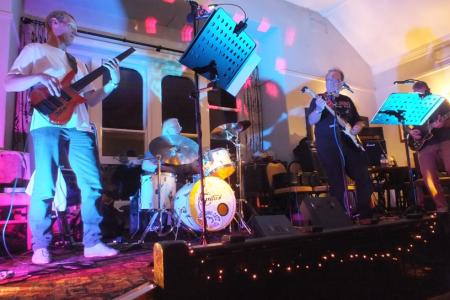
It felt like summer in Buxton today. The Carnival procession brought thousands out onto the streets, where many stayed well into the evening - and it was shorts and shirtsleeve order. At the end of such a day what do you want? My choice was a night of up and at ‘em rock and blues.
Herding Catz is a local band fronted, appropriately enough, by Peter Buxton. The four piece, no nonsense outfit showed its intentions for the evening with an opening Route 66 followed by Peter Green’s Homework and the Clapton classic Further on up that Road. The songs are punched out, the guitar solos are crisp without being flashy.
Other songs by Ry Cooder and Steve Miller followed - by now you will worked out where the Catz get their inspiration from. A leisurely version of Stormy Monday showed the band happy at slower tempos. Other slow blues included Red House and Joe Bonamassa’s Slow Gin.
The second half set list included songs by Canned Heat and Dr Feelgood as well as a rousing Bad, Bad Place (by Ezio - something of a favourite of Peter’s), Walking the Dog and, to finish, BB King’s Good Times Roll.
The Palace Hotel is hosting a good few Fringe events this year and the rooms are spacious which encouraged the dancers in the audience. Whatever the weather Herding Catz will give you a good night out.
Herding Catz are: Peter - rhythm guitar and vocals, Rob - lead guitar, Adrian - bass and Chris - drums.
Keith Savage
BUXTON TAP HOUSE LIVE SESSIONS - Buxton Tap House
Buxton Brewery's Tap House quickly established itself as the town’s most interesting place to drink and hear live music. The town as a whole is well-served by pubs enterprising enough to host gigs but if you are looking for something a bit out of the ordinary then the Tap House is the place to check out.
The Brewery produces an ever-lengthening list of beers - some dauntingly strong - that are frequently sought as “guest beers” around the country. The Axe Edge IPA is a safe bet and a pint lasts a long time.
But what about the music? Tap House regulars were taken aback recently to find that the “stage” had been moved and is now at the heart of the pub - and this means that the music is less likely to be ignored. Which suits me fine - when I go out to hear a band I don't want to have to filter out lots of chatter.
Sling played the opening night of this Fringe season - and they played mainly-mainstream rhythm and blues loud enough to dominate the space without risking injury to ears. Sling are a three-piece, two guitars and drums. Their opening couple of numbers were relaxed, looseners before embarking on something a little more adventurous which justified their “cosmic” tag. It also gave the dancers in the audience something to get in to. They were well into their stride when they took the obligatory break.
The second set comprised just three lengthy numbers with plenty of drive behind them. Though fairly stretched the music was not indulgent and the audience out late on a “school night”was glad to enjoy the uncompromising physicality of Sling.
The Tap House sessions continue with:
7th - Octofunk
12th - Open Mic Night
13th - Honeyfeet
14th - Liam McClair
20th - Tom Blackwell
21st - Andchuck
Keith Savage
CENTENARY ORGAN RECITAL - St Mary's Church
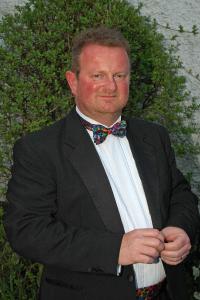
Simon Mercer gave a marvellous, much appreciated Centenary Organ Recital at St Mary’s Church, Dale Road, Buxton.
The concert celebrated the 100-year birthday of St Mary’s Church. 1917 was a bleak year with massive war fatalities, loss of live in industrial accidents and much squalor in the country. The concert however captured what was beautiful largely in England mainly in the Victorian and Edwardian times and a little beyond. Celebrating the birthday of a church in Buxton it was natural that most of the music was English.
It started with one of the most famous pieces in the organ repertoire, Bach’s Toccata and Fugue in D minor and this immediately revealed to us the talent of the performer and the sound of the organ built by Brindley and Foster in 1874.
Throughout the concert Simon demonstrated the versatility of the instrument using the stops singularly and in various combinations. He used the stops and contrast of the manuals with great sensitivity bringing forth the beauty and meaning of the works. I particularly liked the use of the flute stop in Humoresque L’Organo Primitive (1918) by Pietro A Yon. The variety of timbre which he created in Whitlock’s Folk Tune each time the melody was repeated from ‘Five Short Pieces (1929) notably enhanced its beauty.
Simon did so well to bring out the energy in the Toccata from Plymouth Suite (1937) by Percy Whitlock and I had a nostalgic and rose-tinted glasses experience when listening to Edwin Lemarc’s Andantino in D flat (1888). I imagined myself near a bandstand in Pavilion Gardens, Buxton surrounded by people dressed in Victorian or Edwardian clothes.
The final piece toccata by Widor (1879) predictably almost brought the house down.
Simon’s enthusiasm for the pieces he loved was infectious. He gave us interesting and relevant information about the pieces and composers. He informed us for example, the importance of C.V. Stanford to English music. We are lucky that Simon lives in our locality.
By Roger Horvath
CLOSE HARMONY CLASSICS AT THE CHESHIRE CHEESE - Close Enough - Barbershop Singers
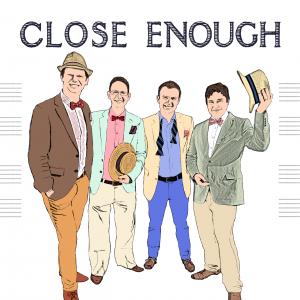
The great variety of shows at Buxton Fringe doesn’t often include barbershop singing, so I was looking forward to hearing Close Enough at the Cheshire Cheese. I was also interested to see how a vocal quartet would cope in a busy pub with the fair in full swing only a hundred yards away. I needn’t have worried. The four-piece group turned up early and smartly dressed. They were immediately made welcome by landlady Sarah who had the performing space ready for them. This doesn’t always happen – believe me!
Close Enough have an impressive pedigree, all are former Oxford choral scholars with degrees in subjects other than music. The group was formed in 2014 and consists of Lead Tom Eyre; Tenor Woody Allen; Baritone Tom Rogers and Bass Johnny Shipley. Musicians with this background sometimes struggle to loosen up when they turn to the lighter side of music. Not so with this feisty foursome, they could certainly swing, had a great presence and used the available space well.
A slick start to the first of two sets grabbed the audience’s attention with The Merry Month of May. A couple of similar tunes followed, but then Close Enough started to push their repertoire well beyond traditional barbershop. The programme gave us some pleasant surprises, including eastern European folk, big band standards and even something from The Jungle Book. There was also a bit of Trombone action which kept the reviewer happy!
Lovely people, lovely music and highly recommended, but if you want an hour of entertaining and amusing song you’ll have to be quick. Close Enough have two shows today (Saturday 8th) 5pm at Scriveners Bookshop and 8pm at the Green Man Gallery, both at a bargain ticket price of £5. You might see them busking around the town as well, before a farewell spot in the Pavilion Gardens on Sunday. I hope we’ll see more of Close Enough at a future Fringe.
Sam Slide
DALE STORR SMOKIN' HOT NEW ORLEANS BLUES AND BOOGIE - Dale Storr
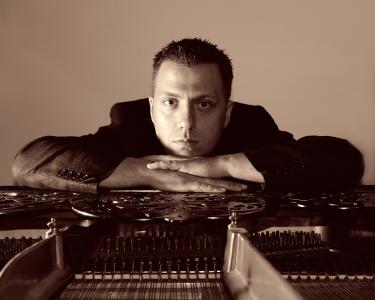
Pianist and vocalist Dale Storr makes his umpteenth appearance in Buxton. We anticipated his shows to be energised, brash and “full on” commensurate with Dale’s self confident personality. If it wasn’t self evident that he is completely on top of his game and in full control of the piano he would be the first to tell you. He played to a full house defined such that no more people could be squeezed in amongst the furniture, not the Albert Hall but the intimate Hydro restaurant in Spring Gardens. Many of the audience were members of Dale’s devoted groupies who seem virtually unaware that this gig is included in the Fringe.
Dale’s piano technique is exemplary and he acknowledges the influences of pianists who mostly hailed from New Orleans, home to some of the great jazz innovators of the late 20th century. Performers such as ‘Dr John’ (whose stage name was adopted from his fascination for a Voodoo healer of that name), strongly influenced Dale’s performance style which is wide ranging from the heavy rhythm and blues numbers to more gentle such as Dr John’s waltz, ‘Dorothy’.
Professor Longhair (descriptive stage name) is acknowledged to be an important figure in the development of funk, incorporating Caribbean rhythms, rhumba, clave and calypso into blues sequences. In Dale’s rendition of ‘Tipitina' has all the ingredients of Longhair’s style from the latin feel to the soulful right hand triplets perfectly executed. Likewise in Huey Smith’s ‘Sea Cruise’ Dale captures the mood and has the ability to hold the left hand boogie patterns steady regardless of the apparent complexity of right hand figures and delivering vocal choruses.
We are told Dale’s most important hero is James Booker also dubbed ‘the black Liberace’. Booker who after an acclaimed performing career but dysfunctional personal life, sadly died aged 43 of heroin addiction. His ability to seamlessly merge tasty chords, classical themes, boogie left hand, ragtime, ballads, rocky numbers all into one piece is a stand alone art form and feat of musicianship. This concert featured several pieces after the Booker style. On some numbers such as the neatly voiced version of Jimmy McHugh’s ‘Sunny side of the Street’ the chord changes were beautiful but threw away potential for expression by appearing a little heavy handed and we know that Dale can play with enormous feeling and sensitivity from other pieces. The merging of ideas in the same piece worked very well and Dale has mastery of doing this. He showed that he has amazing fluency at the piano moving from a few chords into a full blown classical test piece such as we heard perfectly articulated the 1st 16 bars of Rachmaninov’s C# minor Prelude merging into ‘A taste of Honey’ as a Viennese waltz, then several variations into a blues and after some expansive chords back to the Russian style for the big finish - brilliant. The habit of repeating a two bar chord change several times as if just trying something out gives an impression of inviting the audience to listen in on the experiments and for the first few times lends a freshness of discovery. However tinkling about with a few chords and arpeggios especially whilst talking may be seen as doing one’s practice in public. The concert finished with another roaring Fats Domino style boogie blues.
A great evening’s entertainment with plenty of rhythmic excitement, some lovely tunes and a display of sustained technical keyboard skill to amaze. We look forward to hearing Dale again.
Brian K W Lightowler
DAPHNIS DUO - Alice Kirwan & Holly Melia
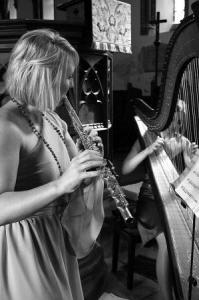
Do not expect ‘run of the mill’ flute and harp classics here as this is a wonderful selection of the lively and uplifting to the relaxing and sublime.
Musicians Alice Kirwan and Holly Melia provide a brief introduction to each piece and their obvious professional admiration and friendship makes this even more of a joy to watch.
Listen out for Bernard Andres’ ‘Narthex’, whose dramatic and haunting melody would not be out of place on the soundtrack to a Hitchcock film. This exciting piece showcases the talents of both musicians and has the audience gripped.
The traditional piece from Massenet’s opera ‘Thais’ will help to slow your pulse rate down again so that you leave in that slightly hypnotised state that the harp and flute can induce.
Karen Wain-Pimlott
DARREN POYZER: 30TH YEAR ANNIVERSARY - Darren Poyzer
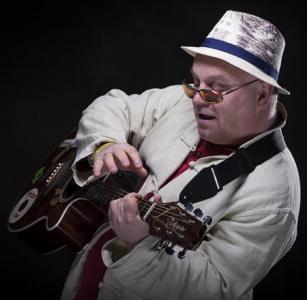
Although the sun was blazing down outside in Buxton’s Pavilion Gardens, sixteen people chose to take refuge in the Underground venue at Buxton’s Clubhouse.
It was an afternoon to remember, Darren Poyzer was performing on the 30th anniversary of his appearance as a musician. He told us of his of his eventful life through songs, which he had composed the music and lyrics which he sang and played on his acoustic guitar
This multi-talented performer also combined both guitar and harmonica together for some of the sequences, which was an admirable achievement.
Darren told us of his varied and interesting experiences. He is a local lad, born in Glossop, who left the town to find adventure in the Royal Navy as a chef. All was fine, with great camarardie among the crew, until the ship was suddenly ordered to sail to the Falkland Islands. The battle there changed Darren’s outlook on life for ever. After that, he began to compose his own music, which varied through the award of a medal in recognition of his war effort when he returned to “Blighty”, the allusions to violence, which he had personally encountered and the horrors and futility of war was the theme of these songs. It was obvious that the experience had affected him deeply.
This however persuaded him to take a more rewarding path in life and now he uses his talents to encourage children with special needs to recognise and participate in the enjoyable medium of music.
To demonstrate this, he used audience participation, firstly by persuading a member of the audience to come on stage and accompany him with the harmonica, while the remaining people present sang the chorus of “It takes a worried man etc.” which we all enjoyed, albeit not totally in tune! Later, after some more evocative self-composed songs, another gentleman was persuaded to come on to the stage, this time to use one of Darren’s unusual ideas, when a mobile phone made musical sounds and was used to the musician in another popular song.
I would have liked to have had a music teacher like Darren, his infectious grin and enthusiasm for music was a joy to encounter. He is a caring and talented man who no doubt, will bring joy to whoever he encounters. I wish him well; Keep up the good work Darren.
Jackie Corrigan
EGRIEGA: MR DIFFERENT - Egriega

Pieter Egriega is quoted as saying, “I think it’s fair to say I play music that is not like anybody else, with a voice that is not like anybody else.” Which makes him hard to describe or to pigeonhole, unless there is now a category of post-punk, late night, observational cabaret, here transposed to 1p.m. on a bright, hot Buxton Carnival Day.
No pigeonholing, but Pieter’s songs do reflect the contemporary culture that Manchester has given the world. A way with words that has given us Morrissey, John Cooper Clarke, Mark E Smith - and if you Google Egriega’s back story and his pedigree you will see why.
The songs describe the frailties of urban life, vignettes of drunken Saturday nights, full of hopes and self-delusion. “All human life is here”, as the News of the World masthead used to say.
This is urban life as observed by Mr Different - a troubled character with a mistrust of bureaucracy and officialdom, a detached observer of the life that teems around him. He is equally detached from the three-piece band he claims are buskers hoping for small change from the drunks on their way home. Fortunately, this claim is just a theatrical device. The three-piece band actually deliver sinuous, Latin-inflected rhythms that underpin the whole show brilliantly.
The vignettes include the longings of a woman who desperately wants a tender man, but dresses like Marilyn Monroe, works the clubs and obviously gives out the ‘wrong signals’ which attract anything-but-tender men. There is medallion man Dave who calls himself Fabio and sees himself as a Lothario. A song about unusual sexual practices, some of which appear to involve surrogate human beings, is reminiscent of Tom Lehrer’s Sado-Masochism Tango - and if I’m not mistaken comes with its own tango rhythm. And a song with the chorus ‘I See You’ and a line something like “the money would be OK but I’d rather you were alive” stops you in your tracks when you realise ICU means something entirely different.
These are songs with a lyrical content that is witty, colourful and thought-provoking. His delivery is gripping and the music weaves in and out, holding the whole performance together seamlessly. Oh, and his voice may not be like anybody else, but it is definitely a voice of power and experience. Contrary to the poster for the show, there is no gaffer tape muzzling this performance.
Graham Jowett
AN EVENING WITH AFRICA'S LADY OF SONG - Margaret Ferguson, acc. by Jonathan Ellis

Margaret Ferguson has performed solo at the Royal Albert Hall and the Bridgewater Hall, among others, so to have this talented Soprano return to the Buxton Fringe is a real pleasure. Margaret performed an eclectic mixture of opera, oratorio and songs from the shows, which allowed her to showcase her full range of vocal talents, ably accompanied throughout by pianist, Jonathan Ellis.
The first half of the programme drew heavily on opera, with pieces by composers such as Vivaldi, Bizet and Rossini. In particular, in Dopo Notte an aria from Handel’s Ariodante, Margaret demonstrated not just the power and range of her voice but also the subtlety.
For those in the audience who may not have been familiar with all the pieces, Margaret provided a helpful preface which established the context for each piece.
The second half of the programme was lighter but delivered with the same skill and vivacity as the first half. It included songs from films (Love is Where You Find It from The Kissing Bandit), shows (Wishing You Were Somehow Here Again from The Phantom of the Opera and Adelaide’s Lament from Guys and Dolls) and ballads (I Heard a Robin Singing) before returning, as she had done last year, to perform two of Elgars’ Sea Pictures song cycle.
At the end of the programme the audience enthusiastically demanded more and Margaret duly obliged to perform two further wonderful, contrasting pieces. This was Margaret’s only solo performance in the Buxton Fringe but the good news is that she is performing again as part of a vocal group, later in the Fringe, as is Jonathan Ellis. Catch her while you can!
Vernon McGarey
AN EVENING WITH THE SOVEREIGN SAXOPHONE OCTET - The Sovereign Saxophone Octet
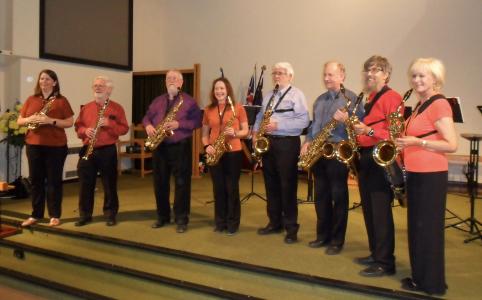
The Sovereign Saxophone Octet gig at the Methodist Church has become a Fringe fixture - and that is something to be welcomed. The SSO - celebrating their 15th anniversary - always bring something different and when they launched into The Lone Arranger Goes Sax Mad (which had fragments from more than 20 well-known tunes knitted into it) you knew that you were in for a fun and rewarding evening.
Clouds is an original piece written for the Octet by tenor sax player Mike Dale - getting a world premiere tonight - and is appropriately multi-layered, texturally rich and not easy to pin down. Singin’ in the Rain, by contrast, was much more direct.
A couple of pieces from the classical tradition - Sheep May Safely Graze and a Delibes aria - followed. The Bach lends itself well to an arrangement for the four different saxophone voices that are included in the Octet (soprano, alto, tenor and baritone). The Flower Duet featured an soprano and alto supported by an ‘orchestra’.
Jazz standard Black Coffee, and an original by baritone player Pauline, completed the first half. Chatterbox was written for the SSO a few years ago but Pauline has joined recently. The tenors and baritones have something of a riff while the altos and sopranos discuss in a more animated fashion.
The second half began with Tomcat by Jay Chatterway followed by an early Charlie Parker tune - Swingmatism - and one by Clarence Williams, Cushion Foot Stomp, from the 1920s, arranged to include four clarinets and baritone saxes taking the part of sousaphones. Marigold was a tune also published in 1927 but an altogether different dance style.
The Zonk Zone and Forgotten Dreams were related by theme - sleep - not that eight saxophones will ever be that soporific!
Crucifixus was originally a piece of Italian church choral music - written about 300 years ago. Properly enough it reached to every corner of the church. You might suppose that Jelly Roll Morton and his Red Hot Peppers would be a world apart - and arrangements of The Pearls and Sidewalk Blues showed a very different aspect of human spirituality.
One supposes that some fairly intensive rehearsals were needed to incorporate a new band member; the SSO sounded especially focused and together tonight. Their return to the 39th Buxton Festival Fringe in 2018 will be welcome.
Keith Savage
FATHERS OF THE BAROQUE - The Eisenach Ensemble
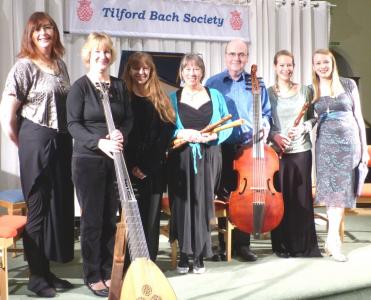
Churches are not always a suitable setting for chamber music. But the parish church of Eyam provides just the right kind of space - intimate but not cramped, and with a very acceptable acoustic. It is also a welcoming church, and on Sunday afternoon, it was very pleased to welcome back the Eisenach Ensemble, which visited Eyam for the first time last year. An appreciative audience of 55 people heard a programme of baroque music that turned out to be a veritable feast - a feast of small but carefully and expertly chosen musical dishes.
The Ensemble consists of two sopranos, two treble recorders (one doubling as a tenor viol) and a continuo section composed of harpsichord, bass viol and theorbo (a large and handsome 14-string viol to which its player introduced us). Finding enough music for such specialised forces, and concocting a sufficiently varied and interesting programme from that music, might seem to present quite a challenge. But the audience had no need to worry on either score.
The concert began and ended with pieces by Monteverdi. In between, the first half was dominated by Bach and Telemann, and the second by Purcell. But there were also purely instrumental items by much less well-known composers (Piccinini and Kapsberger). Altogether, although entitled “Fathers of the Baroque”, the programme did not neglect sons, grandsons and the odd obscure cousin. Variety was achieved by interspersing pieces for solo singer and soprano duet, and pieces with and without recorder accompaniment. This reviewer particularly enjoyed the charming and lively Telemann numbers and the sensitively rendered Purcell songs.
The instrumentalists provided steady, proficient and stylishly sympathetic support, but it was the singers, Cate McKee and Angela Hicks, who provided the most flavoursome experiences of the afternoon. Though nicely contrasted, their voices blended to often exquisite effect in the duets.
Perhaps the only regret was that we were not told a little more, by way of programme note or introduction, about these well-chosen pieces. Please come again!
Richard Olney
FOLKLORE, FAIRY TALES AND FANTASTIC BEASTS - Les Deux Amies
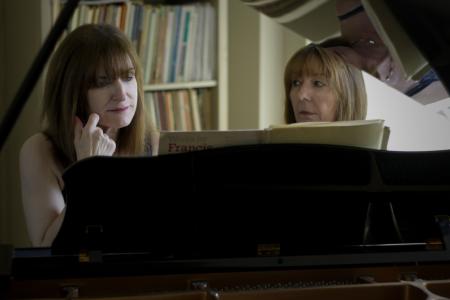
Les Deux Amies are Heather Sargeson and Marianne Kelly who met a year or two back at Sheffield University. Family life meant that they drifted apart for a bit but they now make music together as a piano duet. This requires more than just musical skill - it also takes a good deal of spatial awareness to share a keyboard without getting in each other's way.
Heather and Marianne have decided that they should play authentic music - either written specifically for a piano duet or arranged as such by the original composer. This may have limited the repertoire a bit but they presented an interesting and accessible programme of music from around the turn of the 20th century.
Camille Saint-Saens’ Carnival of the Animals is a much-loved orchestral suite - The Swan being particularly familiar. It works very well for four hands at the piano - the 14 short movements being expressive programmatic music.
Ravel’s Mother Goose is a bit more subtle musically and more demanding of the pianists - but again the five episodes seek to represent a mood or event. The final piece was the fourth movement from Rimsky-Korsakov’s Scheherazade Suite. This tells of a Festival at Baghdad and a maritime disaster. It is ‘romantic’ music, familiar but demanding.
This was a most enjoyable programme played on the URC’s Broadwood grand piano which dates back 120 years or so. It is a good instrument and we are lucky to have it. It is being totally restored in the coming months and it is hoped and expected that it will provide an even richer musical experience for the Fringe audience’s of 2018.
Keith Savage
JANE AUSTEN'S PERSUASION: A NEW MUSICAL DRAMA - Chamber Opera Tours
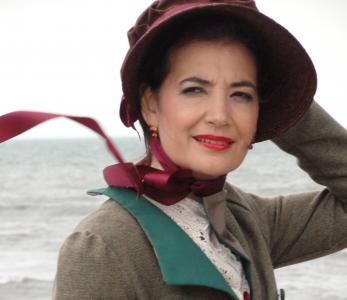
Jane Austen's Persuasion is a large opera production with a cast of 51 (based on the list in the programme) and 9 musicians in the orchestra. The Art Theatre was a perfect setting for this opera and provided a similar atmosphere to the Buxton Opera House.
The opera gains it's authenticity from meticulous research using music that was known to Jane Austen and composed by Beethoven, Corelli, Handel, Haydn as well as several others. The opera lyrics were written by Barbara Landis who also takes the lead in the performance playing both Jane Austen and Anne Elliot. The plot of the opera closely follows the plot of the Austen's novel and adds the device of Jane Austen herself appearing several times during the evening to introduce events in the story.
The cast contained both Americans and non Americans but the accents were all British not doubt due to the efforts of the dialect coach listed in the programme. The quality of the singing was uniformly excellent especially given the size of the cast which exceeded the cast sizes usually seen at the Buxton Festival. This was a comic opera reflecting the humour as well as the romance of Austen's novel. On occasion the actorssingers were required to play scenes for laughs and occasionally sing intentionally out of tune and this very much added to the fun of the production.
An interesting addition to Austen's story was the inclusion of Irish dancing. This is authentic since many Irishmen served in the British navy at the time. The exuberant sight of Irish dancers in naval uniforms provided an enjoyable interlude and change of pace.
The staging was creative and very effective. The movement between locations was signified by projecting the location onto the main stage backdrop and subtle staging effects were achieved by projecting onto a transparent half curtain and using a raise platform erected to one side of the stage. All that was then required was a few relevant pieces of furniture and the audience was transported in an instant between the homes of the various protagonists or to Austen's favourite location of Bath.
The Buxton Festival fringe is very fortunate that the Chamber Opera Chicago has brought this substantial production to the festival although the distance of the venue from Buxton may have deterred some of the mainstream opera goers from attending.
Alex Watts
KALEIDOSCOPE WITH A HINT OF AFRICA - Kaleidoscope Community Choir
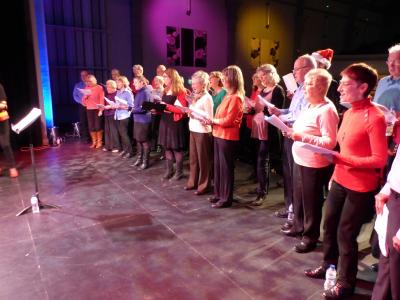
The stage at Buxton Methodist Church was packed by a choir of 33 enthusiastic singers and a supportive audience of around 40 people.
This was the ideal venue for a choral rendition as the high ceiling promoted excellent acoustics. Members of Kaleidoscope Community Choir were on top form. They are coached and conducted by their musical director, Carol Bowns under whom the choir has gone from strength to strength. They rehearsed initially in the Dress Circle bar at Buxton Opera House, but soon outgrew that venue as more people joined and now use a room in the Clubhouse opposite, except during Buxton Festival, as the room is not available.
Their obvious enjoyment and enthusiasm combined with word and note perfect choral renditions, Most of their renditions were harmonious, without the support of a musical accompaniment, but Ian Bowns, Carol’s husband played his acoustic guitar in some of the songs towards the end, thereby giving a further enhancement to the songs.
The main theme of this performance was “A hint of Africa” so the choir provided some traditional, mainly unfamiliar, harmonious songs, again unaccompanied, with three-part harmony, which worked very well. Carol encouraged audience participation for the chorus of Whim-away, as the choir and guitar provided the main lyrics. We soon joined in and, encouraged by Carol, managed to deviate between loud and soft notes.
The culmination of this most enjoyable concert was an evocative song. Both the lyrics and music were by a talented choir member; Jacob Eckert. This was entitled “Distant Peak”, and was again sung with great enthusiasm by the choir, and was a wonderful finale for a thoroughly enjoyable lunchtime concert.
The choir will meet again on 12th of September and anyone who would like to join them will be very welcome.
Jackie Corrigan
THE LAST WORD IN CELTIC GYPSY KLEZMER: A FESTIVAL/FRINGE SHOWCASE - Dodo Street Band
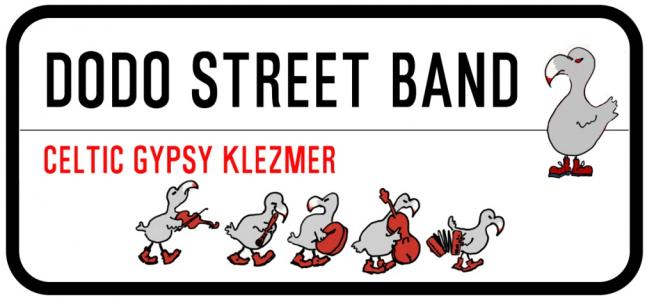
What do you get if you take five accomplished musicians and have them fuse Celtic music with Eastern European Klezmer influences? Well, almost a full house in the Fringe’s largest venue for a start.
It’s not clear how a niche music concert managed to draw such a large crowd but many Fringe performers would like to know. Maybe it is the fringe attitude of trying something a bit different – for surely this music is not a well known genre.
The music itself was lively and exciting and impressively played. Many of the numbers were upbeat which allowed the performers to show their skills and the fewer slow numbers were also well received. Memorable was the ‘Wild Mountain Dodo’ (Dodo’s were a theme in the show) which combined the melody of the classic folk song with a Vaughn Williams style arrangement.
The final number, ‘Toetapper’, allowed the players to take centre stage in turn, showboating jazz style, which maybe explains why three of the five instrumentalists wore hats throughout the show. Or maybe not.
The show lasted just an hour including an encore, which really wasn’t long enough. The audience was enthusiastic and would have welcomed another half hour.
Brian Kirman
LEONARDO LEO'S ONE-ACT OPERA LA ZINGARELLA - Ellery Enterprises
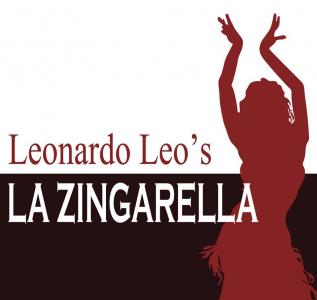
Well this was fun that charmed the pants off the audience that was shrewd enough to be at St Mary's in what is proving to be a very busy and successful centenary year for the church. For a humanist I seem to spend a lot of time in churches these days and the Arts and Craft details, the acoustics and the friendly congregation make this one of my favourites.
This evening’s entertainment was made up of a short concert by a string quartet (plus a theorbo). The choices were very familiar - Eine Kleine Nachtmusik, Pachelbel’s Canon, Air on a G String - that sort of thing. Familiar or not it is always better to hear music played live than to listen to it on the radio. Tonight's musicians were good and the audience enjoyment was palpable.
The second half was more of a novelty and it is safe to assume that La Zingarella was new to the Buxton audience. This one-act, largely comic, opera is barely half an hour long and has about four arias and one duet. The story is simple. A rich man wants an attractive but poor woman. She finds him to be a pompous egoist and not to her taste. She looks elsewhere - but it ends tragically (it is an opera - comedic or not).
La Zingarella was written by Leonardo Leo in Naples around about 1730. He wrote two parts - Riccardo (sung by baritone Lukasz Biela) and Lisetta - La Zingarella - sung by Suzanne Smart. For this production the show’s director created a narrator, Valentino (Rhys Downing) who not only explained the story but also attracted the attention of Lisetta.
The orchestra was conducted by Stephen Ellery who helped generate such a positive atmosphere among the audience - some of whom were entrusted with the sophisticated sound effects.
All-in-all, great fun.
Keith Savage
LOCAL MUSICIANS' SHOWCASE CONCERT - Club Acoustic

This Local Musicians Showcase does what it says on the tin. Under the watchful eye of your host Tony, Club Acoustic presents an eclectic mix of home grown musicians with something for everyone from country, folk, acapella to more contemporary sets.
Amongst others, the line up included acoustic guitarist Kevin paying homage to country’s Slim Whitman and Rhiannon’s mesmerising acapella rendition of Gershwin’s ‘Summertime’. Buxton’s very own Stuart Clowes, who some of you may know as your local pharmacist at Clowes Chemist, showcased his musical talent on keyboards and guitar accompanied by Charlotte on vocals with a set of contemporary music including Bowie and Shaun Mendes.
This platform for local talent has a loyal following and don’t worry if you missed this evening, the club meet once a fortnight upstairs in the Old Clubhouse where regular and budding musicians can take to the stage. Who knows, next year it could be you up there!
Karen Wain-Pimlott
LOVE, NATURE & SHAKESPEARE - Sue Morgan & Espérance: Clare Devine/Stewart McCoy
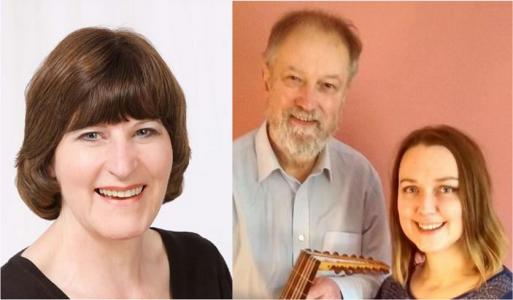
This was an appetising programme of songs for early on a fine summer evening: with words mostly drawn from Shakespeare and music by composers such as Schubert, Greig and Vaughan Williams as well as a number of English near contemporaries of Shakespeare himself.
Schubert's “Who is Sylvia” began the programme with Sue Morgan (soprano) accompanied by pianist Angela Foan. Most moving of the first set of three songs was Greig’s Ich Liebe Dich (I love you) one of the few lyrics in the programme not from Shakespeare.
The second set of songs was presented by Esperance (Clare Devine - soprano - and Stewart McCoy - lute). Clare has a warm voice well-suited to songs such as O mistress mine, Willow Song and It was a lover and a lass which became an established part of the repertoire thanks to the singing of Alfred Deller in the post-war years.
Sweet Kate (by Robert Jones) brought Sue and Clare together for a duet - they otherwise sing together in the chamber choir Sinfonia Chorale based in Nottingham. The arrangement for two voices was especially attractive.
Sue and Angela continued with songs derived from the character of Ophelia in Hamlet. The 19th century composer Ambrose Thomas took some liberties with the characterisation but his dramatic setting suggests effectively Ophelia’s developing illness. Elizabeth Maconochy’s 20th century setting offers a sympathetic account of the young woman’s state of mind.
Esperance returned for five further songs which have become familiar to us: Full Fathom Five; Orpheus with his lute - a setting by Stewart McCoy; Where the bee sucks; Hark, hark! The lark; Take, O take those lips away.
Sue and Angela returned to perform Vaughan Williams’ setting of Orpheus with his lute and Arne’s Under the Greenwood Tree. This enjoyable and satisfying programme was brought to a close with a final duet - Charles Horn’s ‘popular’ setting from 1823 of I Know a Bank, from a version of The Merry Wives of Windsor (though the song actually appears in A Midsummer’s Night Dream. I am indebted to Sue Morgan for her very helpful programme notes).
Keith Savage
MIXED CHAMBER DELIGHTS - Cheshire Chamber Collective
I understand why many love the majesty, grandeur and drama of symphonic music but given the choice it is the intimacy of chamber music for me every time. The musicians that make up the Cheshire Chamber Collective are familiar and welcome visitors to Buxton and for the first half of this programme they offered two wind quintets.
The French composer Jacques Ibert is not especially well known - his contemporary compatriots generally outranking him. His music is easy on the ear and the three, short pieces (composed in 1940) were at times witty and tender - music that you would happily hear again.
The German cellist and composer Frank Danzi was a contemporary of Mozart and Beethoven and you can readily hear their influence in his music. He wrote many wind quintets and tonight we heard the first of three that make up his Op. 56. His music is full of elegant and delicate lines showing both a good understanding of the qualities of the individual instruments and an ability to knit them together skilfully and intelligently. The second movement - Andante con moto - was particularly graceful with fine horn and bass on writing.
If neither Ibert nor Danzi, accomplished as they are, are composers of the first rank, Schubert certainly is. His Octet in F major was written in a few weeks early in 1824 having been commissioned by an amateur clarinettist Count Ferdinand Troyes. After Schubert’s death in 1828 the octet was not performed for over 30 years. Now, of course, it is one of the cornerstone’s of the Chamber repertoire.
This is great music; totally absorbing with a depth of feeling that engages and involves. Quite how music of such order and beauty came out of a life as disorganised as Schubert’s often was is hard to imagine. Our thanks are due to the Cheshire Chamber Collective for fine performances of this music.
Keith Savage
A MOOD ECLECTIC - Basin Street Jazz and Blues
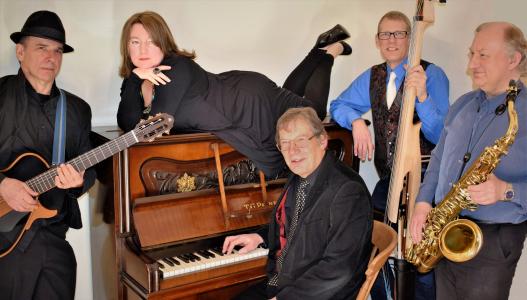
The High Peak Room at The Palace Hotel is about a grand a room as you can get for a gig in Buxton (outside the Opera House) and Basin Street Jazz and Blues set themselves something of a challenge of living up to it. Happily they amply justified the billing with a generous, well-judged and varied programme.
They quickly demonstrated their versatility with some be-bop and a bossa nova. Singer Jules Scott proved herself to be equally flexible and her version of Leonard Cohen's Dance Me To The End Of Love was especially enjoyable (and featured Mike Dale's Old metal clarinet). Later in the programme her singing of Elvis Costello’s Almost Blue was tender and sensitively supported by the band.
Five-string electric bassist Adrian Sherwood provides a firm underpinning to the music - often filling in the melody - and contributes original songs, one of which had a nice bottleneck guitar solo by Fred Rolland.
The Jazz credentials of the band were firmly established in standards such as Nature Boy where all the lead players had the chance to shine. They were also prepared to take chances with familiar material and Summertime took a rockier road than might have been anticipated - and was none the worse for it. How High the Moon was also updated in terms of style and mood - probably a sound ploy if you want to avoid comparison with people's favourite version.
The second set began with Brubeck’s Unsquare Dance followed by What a Difference a Day Makes - more examples of adventurous programming. A standout song in the second half was a Fred Rolland French original - suitably romantic in feel.
Most of the soloing duties fell to sax player, Mike Dale, fluent and melodic on tenor, alto and clarinet. Pianist Brian Lightowler has additional work to do in a drum-less band but steps up to the plate taking some adventurous solos.
Basin Street Jazz and Blues take their music seriously, but not too seriously. Their witty finale - a Jelly Roll Morton favourite - brought a good evening to an enjoyable end.
Keith Savage
MUHA: EASTERN EUROPEAN CONTEMPORARY FOLK - MUHA
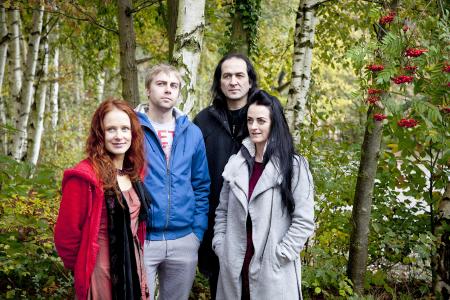
MUHA are based in the East Midlands and whilst most of their songs are traditional Russian and Ukrainian ones their set includes some originals. Their arrangements draw on some Western European styles - this is not an attempt to present authentic, traditional renditions.
Today we heard a duo, one from the Ukraine and the second from Latvia; both played guitar, and the first Russian song was about “how everything comes and goes.” Relaxed, despite the theme - suggesting an acceptance of what happens. Second was a song about a doomed love affair between incompatible animals - sung with a smile on the face suggested that this was somewhat whimsical. This was followed by a rather more tragic human story.
Next came ‘Let's talk about the weather’ - dedicated to English audiences and a “very famous” Russian folk song about a man hoping to get back home to his wife despite the freezing weather - the rather trudging rhythm suggested that his journey was a difficult one.
An original followed, ‘Cornwall Song’ - perhaps evoking the sunshine of a relaxed summer’s day.
Another Russian folksong about being ready to meet God seemed to confirm that folksongs the world over confront some of the harsh realities of the human condition.
Naturally the focus was mainly on the sound and shape of the songs but throughout the
accompanying guitar provided melodic and fluent infills.
For one Ukrainian folksong about the hardships of peasant life, a traditional instrument described as a mechanical, wind-up violin was employed and provided a hypnotic underlying drone. The final song was a slightly cheeky one about a daughter’s affection for her mother and the indifference she shows her mother-in-law.
All-in-all this was an enjoyable afternoon of songs and music - easy on the ear, well played and sung with feeling, charmingly presented. The full, four piece band - based in Nottingham - can be heard on Saturday 22nd July and it should be well worth your time, but book in advance to avoid disappointment. Many here today will be back!
Keith Savage
MUSIC FROM THE PEAKS - Peak District Music Centres
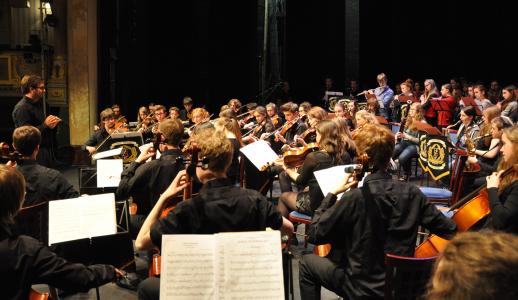
The final benefaction to the town of Buxton by the 5th Duke of Devonshire was this magnificent church. The simple Regency architecture of the exterior hides a wealth of glorious detail and multi- hued glass. The lack of pillars opens the church out to allow an uncluttered view of the chancel and, of course, a space which offers deep and rich acoustics. Where better to play live?
The Peak District Music Centres (PDMC) is a charitable organisation whose purpose is to support and promote ensemble activities for young people in the Peak areas and on this opening evening of the Fringe Festival they have packed the church to the rafters. The PDMC rely on a small army of volunteers and is led tonight by directors Gavin Usher and John Milner. The age of the musicians ranges from 13 to 18 and, as a consequence, some of them are playing their final pieces before they move off to college and university.
The evening is split into two parts with the Peak District String Orchestra, conducted by Gavin Usher, playing first with an intense Concerto Grosso No1 Movement 1 by Ernest Bloch. This gives way to a honeyed Romance by Gerald Finzi. The playing is immaculate, every note hanging in the still church air, dying away to silence before the applause.
I am a newcomer to Buxton, having moved here in February for many reasons and this is one of the main ones – to hear music of this quality, being played live, in an almost ridiculously perfect setting.
Soloist Ewan Kilpatrick (one of the leavers) steps up to lead a rousing Chaconne by Vitali (arr Chartier) and the orchestra take the roof off. I can see from the beaming faces of the musicians as they take their standing ovation what playing in this orchestra means to them – it’s a glorious pride and sense of achievement. The Hope Valley Violin Trio (combined age barely into double figures) play a remarkably mature Intermezzo and after an interval we’re off into the world of swing and blues courtesy of the Peak District Big Band, directed by John Milner.
This marvellous noise fills the church and vocalists Molly Rider and Mitch Probert-Watt dazzle respectively with Teach Me Tonight and a personal favourite of mine, Minnie The Moocher. This joyous music then tips into the sublime when the string orchestra join the Big Band, swelling the numbers to 35 musicians for an inspired choice of finale – the Theme Tunes from The Avengers and The Incredibles. I always believe it’s a great sign if I walk away from a musical event wanting to hear more; high quality entertainment which ended far too soon.
I am hugely impressed by the dedication and quality of these musicians and by the determination and talent of the adults leading and supporting this group; the PDMC need more musicians – google them and join!
David Hanson
NEW ORLEANS INSPIRED JAZZ - Mart Rodger Manchester Jazz
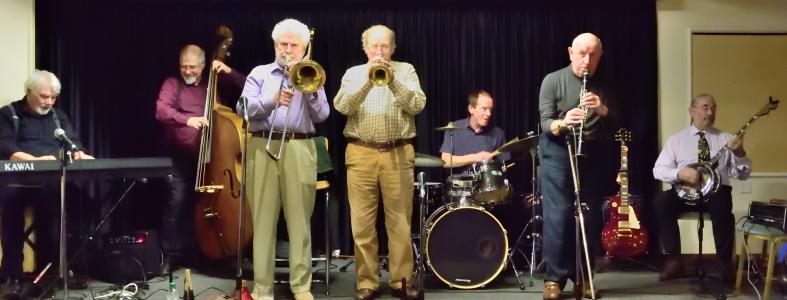
Musicologists can argue about the entitlement of the description ‘New Orleans Jazz' in the light of the true traditions of jazz. A recent visitor to New Orleans is unlikely to find the type of performance refined by Mart Rodgers, and ‘inspired’ is the operative description here. But semantics aside we know what to expect for Mart Rodger’s New Orleans Jazz and the band’s performances never fail to draw a crowd of enthusiastic devotees infected by the toe tapping bonhomie. The Conservative Club, just off the Market Place has all the facilities as a good setting for this type of show, one of Buxton’s hidden gems. On the first night of the Fringe the audience was somewhat fewer than the band’s last show at the Arts Centre Sunday jazz spot nevertheless, the select faithful were treated to a most enjoyable evening of easy listening jazz favourites.
The band leader himself was not able to make this gig, having sustained injury in a fall and the role of compere was taken by pianist Roger Browne. Deputising on clarinet was John Hallam. On trumpet was Alan Dent, trombone Eric Brierley, banjo Louis Lince, double bass Alan Wilcox and on drums Chris Pendlebury. The members of this band have been playing together for many years and their fluency was evident. Individually the players clearly know their stuff and there was some particularly good individual moments. The overall balance was pleasing and I particularly liked the understated and often very clever bass lines from Alan Wilcox which cemented some of the awkward areas beautifully.
The traditional numbers ‘As long as I live’, ‘China boy’, ‘let the good times roll’ and ‘Panama’ followed the well trodden path “round the band” with solos which were all well executed on the trad framework. ‘Jeepers creepers’ featured Eric Brierley’s vocal talents with that old jazzer appeal supported by a neat piano solo. The band played a couple of slow blues numbers which effectively evoked the funereal atmosphere appealing to emotions of lamentation including a creditable but sometimes disjointed rendition of ‘The Old Rugged Cross’. A version of ‘Lady be good’ kicked off with a slick uptempo piano introduction and featured well constructed solos from the front liners. The band’s interpretation of the lovely Django Reinhardt tune ‘Nuages’ was compressed into the trad jazz genre which though well played using standard chords was a bit like the rest of the programme. Likewise the number ‘Poor butterfly’ which over the years has been given various ballad treatments by luminaries such as Sarah Vaughan, Tony Bennett and Frank Sinatra with quotes from Puccini’s opera, was rendered on the tried and tested Mart Rodger formula.
Some of Roger’s piano introductions were very imaginative and worked well. His medley of tunes from My Fair Lady was very nice; for the rubato section he deserves to have a whip round for a better keyboard or promoters could hire in a grand piano; his touch on the swing sections was very good and nice voicing on the turn round of ‘get me to the church on time’. The blues number ‘My naughty Sweetie’ was very deftly executed by John Hallam and Roger with some rich altered chords, though not necessarily of the era of the song, very pleasing listening. The trumpet of Alan Dent has the air of maturity with just the right level of complexity and tone for the occasion. I rather like his neat way of suggesting quotations of other tunes in his solos, for example in ‘Once in a while’. Louis Lince played solo of his own composition on the banjo with sensitive bass & drum backing, evoking the atmosphere of the old Mississippi plantations. In their treatment of ‘Jones’ the style broke away from the trad mould with a bebop feel which worked well. The closing number was an uptempo version of ‘Sweet Georgia Brown’ very characteristic “round the band” well rehearsed solos including a spectacular blast on the drums from Chris Pendlebury like a release of frustration.
In all a happy and entertaining evening and this band deservedly enjoy a loyal and enthusiastic following on their extensive gig calendar and are definitely worth a visit in the next 2 weeks during their Fringe debut.
Brian K W Lightowler
ORCHESTRAL CONCERT - High Peak Orchestra

You can’t help but be moved by the resplendent atmospheric performance provided by our very own High Peak Orchestra, with revered Conductor David Chatwin at the helm.
Within the beautiful setting of St. John’s Church providing wonderful acoustics, get swept away from start for finish with works from Humperdinck’s overture ‘Hansel and Gretal’, to a mesmerising violin solo performance of Prokofiev’s Violin Concerto No. 1 by Dumfries born Iona McDonald, which was rewarded with a much deserved bouquet of appreciation from the audience.
Should you need it, the provision of a programme really helps to provide the background of each composer and contextualises the works as you sit back and listen.
Ending with Franck’s Symphony in D Minor, this is a perfect evening of ‘class’ for seasoned classical lovers and novices alike, providing a wonderful fundraising event for the Samaritans.
Karen Wain-Pimlott
PIANO RECITAL - Jonathan Ellis
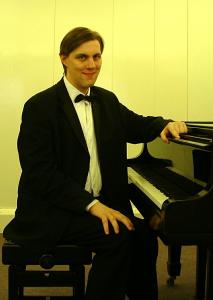
The pianist, Jonathan Ellis gave a tremendous concert on Saturday July 22nd at the Buxton Methodist Church.
He started with Mozart’s Sonata in C Minor (K457). As with his A Minor Sonata it took on an intense dramatic quality which Jonathan projected to the audience with great panache. Jonathan’s playing created great contrasts in dynamics which brought about excitement and demanded full attention from the audience.
The second item was the 4 impromptus op 142/ D935 by Schubert. Although they can be played as individual pieces when played together they form a united work with the first and last movements being in the key of F minor. The first and last movements are less familiar and it was a treat to hear the amazing last movement especially with Jonathan bringing out its creative energy and vitality. I expect the outer movements are less familiar because their difficulty may result in them not being found so often in the amateur’s music library.
At the interval Jonathan helped to create a friendly atmosphere by mingling with audience making some interesting musical comments.
The second half began with Kreisleriana by Schumann. As with all the pieces he played Jonathan gave some useful information before he began. The music was inspired by the many facets of Kreisler’s character. Kreisler was a half crazy and eccentric character created by E.T.A. Hoffmann. We were told that Schumann completed this piece in 4 days perhaps in a manic state. The individual characteristics of the pieces came across as well as a sense of the pieces belonging together.
In Debussy’s Pour le Piano the beauty of the piece was conveyed and the difficult passages were played with apparent ease.
The audience would not let Jonathan go until he gave an encore. He played the Maid and the Nightingale by Granados. This piece was the fourth from Goyescas which is a piano suite inspired by the paintings of Francisco Goya. He also played Chopin’s Prelude in D minor no.24 from op.28. The audience greatly appreciated the encore as they did the whole concert.
By Roger Horvath
PIANO RECITAL: A FESTIVAL/FRINGE SHOWCASE - Dinara Klinton
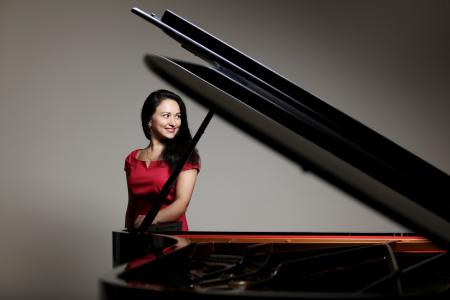
Virtuosic classical pianist hails from Ukraine, continued training at Moscow conservatory and subsequently at Royal College of Music London. Her career has been boosted by success at numerous international piano competitions having gone through more than the standard young talent showcases and she has been awarded several prizes as a result. Dinara now lives in London though she hardly “lives above the shop” as her current list of engagements is breathtaking with recitals and radio appearances throughout Europe, USA, Japan and Russia jetting across the globe every couple of weeks. Since her debut CD recording at the age of 16, she has been well known for interpretation of the works of Chopin and Listz. Dinara has performed with many of the world’s renowned orchestras. Although undoubtedly a result of prodigious talent and fierce application to the instrument, Dinara’s career has been aggressively managed securing her place at the top of the piano world.
Today’s first piece was Beethoven’s Sonata no 28, Op 101. The opening was stunning with a beautiful soft touch and great expression giving the feel of rubato. The themes were clearly brought out in middle parts and made the most of the resonant bass of the magnificent Fazioli grand piano, a recent acquisition of the Opera House from a generous benefactor. I have to say that the Fazioli is a piece of kit that underpinned this performance with depth and yet precision. That is not of course to say the the piano plays itself and Dinara’s performance throughout brought every emotion possible out of the music. The second movement characterised by crisp such chords without any suggestion of fracture and high precision articulation of the turns produced superbe contrast in the interpretation. The smooth opening chords of the third movement contrasting the sparser question and answer figures clearly articulated captured the mood of the music. The fugue like sections later in the piece have echoes of the baroque but with style of expression which started in Beethoven’s time with the technological development of the forte-piano. Dinara’s expressive interpretation takes this a step further into a modern and more meaningful conversation. Beethoven doesn’t get much better than this.
Next up were 6 of Liszt’s Etudes d’execution transcentante. All these studies are incredibly difficult to play at all and to deliver with emotion and panache is an attainment confined to but a handful of pianists internationally. Dinara is clearly one such artist. From the grand opening theme of the prelude with truly virtuosic arpeggios at lightening speed to the more contemplative 2nd study where the left hand would be a piece in itself, one might have thought that there were two pianists doing this! In the 4th the leggerio right hand figures provide complete contrast to the decisive chords were an emotional pleasure. We are aware that Dinara has gained a reputation for being a Liszt expert and an authority on interpretation the composer’s work and her playing seems somehow effortless, belying an awesome technique.
For me the recital was all too short and we hope to see more of Dinara in the future. It would be a bonus if this were in the intimate setting of the Buxton Fringe rather than just the ethereal concert platforms to which she is accustomed or on television!
Brian K W Lightowler
RICARDO ALVAREZ QUARTET - Emlyn Vaughan
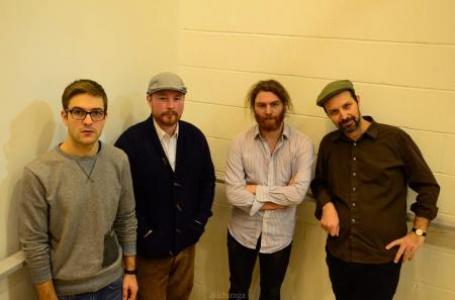
On an unusually balmy Buxton afternoon in a dimly lit room at the Old Clubhouse, the atmosphere could almost be mistaken for a backstreet basement jazz club in Havana.
Humble Chilean front man and composer Ricardo Alvarez showcases jazz tracks from his album of original works recorded in York. Despite a quiet disposition his obvious passion for this genre of Latin / Cuban jazz is totally infectious.
Ricardo leads with saxophone but is always generous so that the rest of the talented quartet can shine during their solo moments, with Joe Montegue on drums, Cornelius Corkey on electric guitar and Buxton’s very own Emlyn Vaughan on double bass.
Whilst there are ’improv’ moments, this is great jazz without being too ‘jazzy’ and will be enjoyed by a wide audience.
You will be unable to sit still and expect to leave feeling like you want to go out dancing!
For future fringe billings this would be a perfect show combined with the ‘A Night in Havana’ dance event which this year takes place 13 July.
Karen Wain-Pimlott
RUMINATIONS - GUITAR RECITAL - Richard Haslam
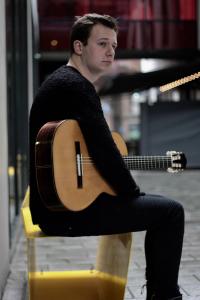
I have to start this review by admitting that I am not a musicologist, not even particularly familiar with contemporary, serious guitar music. But I do count myself an aficionado of guitar music, especially of Spanish and Latin American music - familiar with flamenco and the ‘Segovia era’, as Richard Haslam described it to me, and with Villa Lobos, Sor, Carlos Jobim and Cuban ‘son’. I say all this by way of introduction because Richard’s performance was a revelation to me. It opened my ears - and my mind - to ways of thinking about guitar music which I had never considered until now.
The concert started with ‘Catalan Peasant with Guitar’, by Julian Anderson, a piece inspired by a vibrant blue artwork by Joan Miro. This served as a fine showcase both for Richard’s playing and for Anderson’s eclectic composition, with flamboyant lyrical runs, harmonics high up the fretboard, staccato figures and a strange piece of detuning and retuning which Richard executed faultlessly. As his notes explained, there were elements of eastern European folk music and Indian ragas, and I swear I almost heard a blues bass run in there somewhere.
He introduced the next piece - ‘Lullaby for Illian Rainbow’ by Peter Maxwell Davies - with advice from guitarist Tim Walker, for whom it was composed: “Never play this for children… ever”. The piece was dedicated to the birth of Tim Walker’s son and featured many melodic runs and a final section which actually could have been a lullaby, but the frenetic quality of parts of the music and the percussive effects on the guitar body were definitely not conducive to sleep.
The final section was made up of pieces by the prolific Cuban composer, Leo Brouwer, and opened with La Espiral Eterna. Richard’s notes explain that this was intended to be an electronic work, but the technology was not available in US-embargoed Cuba so Brouwer transcribed it for guitar. The work started with some ferociously quick fingering and included percussive effects high on the fretboard, so it was perfectly reasonable to interpret these as ethereal radio signals from distant stars at the creation of the universe.
The last piece was more recent. ‘Sonata’ was composed in 1990 at the request of Julian Bream and was made up of more accessible movements (at least to me) reflecting Spanish and Cuban elements, a Satie-like Sarabande and a Toccata de Pasquini with repeated arpeggios which seemed to build dramatic tension and then allow it to dissipate again.
This was one of those concerts which you long to have a recording of, because you know it will repay repeated listening many times, revealing layers of subtlety in both performance and composition.
A particular pleasure was Richard’s approachability and willingness to talk about his music. Not only had he written very helpful notes on the pieces for his audience, but as you might expect of someone who has just completed a Master’s degree, he was immensely knowledgeable and full of anecdotes and technical details of the pieces, their composers and performance. If you have the opportunity, do collar him after a performance - it will greatly add to your appreciation of the music. But don’t tell him I said so.
Graham Jowett
SAM DUNKLEY - Performing Arts Etc Ltd

Our old friend Sam Dunkley is back on the Fringe. That’s nice! Sam thinks it’s twelve years since he first appeared in Underground Venues when it was underground. I think it might have been thirteen. The year before he did that thing in Mulgrave Woods.
In the meantime Sam has been and not been, done many things and, most memorably, was our compère for our thirtieth-year celebrations in the Opera House. Those who have seen him before will need no review. This is the same old Sam. Perhaps there is a little more substance to him. And this year he has left the keyboards behind and sticks to his guitar which is a shame for your reviewer who was particularly fond of his “Hallelujah” (Cohen, not Mozart) backed by piano.
Sam’s Sunday afternoon entertainment is warm and relaxing. His personality is engaging and his music enjoyable. Most tunes are traditional folk songs but particularly enjoyable are his own composition “Somebody’s Darling” and his a capella rendering of Thomas Moore’s lovely “Those Endearing Young Charms”. Sam’s song is his way of telling a true and heart-warming story of humanity and generosity of spirit. Encouraging in these times.
Sam does it again on the last Sunday of the Fringe at 4pm upstairs in Underground Venues. Take the weight off and join him for a wind-down.
John Wilson
SOMETHING FOR EVERYONE - Voci
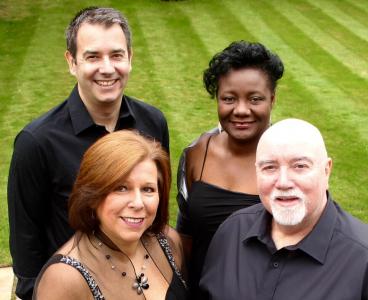
Anyone who has heard this vocal quartet before will know that the singers draw on a wide ranging repertoire - their first concern is to find a good song and do it justice. Tonight's programme of 28 pieces (including two encores) included Cole Porter, Handel, Rogers and Hammerstein but it was, perhaps, the selection from Mozart beginning the second half that caught the eye and ear.
Voci entertains and delivers a show as well as sings. Beginning with Porter’s ‘Another Openin’ Another Show’ allowed the singers to join the fray individually. The romantic Ivor Novello duet ‘Glamorous Night’ (featuring Eric and Margaret) was particularly affecting.
Eric has a light tenor voice that lent itself admirably to the well-known aria ‘Core ‘Ngrata’ which he sings with tenderness rather than power. The power of baritone David Cane was evident in ‘Bess, you is my woman now’ - a duet with Margaret Ferguson. Their voices being a good match. Later he duetted with Elizabeth for Jerome Kern’s ‘Only make believe’ and this was equally charming.
Lehar’s ‘You are my heart’s delight’ brought Elizabeth and Eric together, Jonathan’s piano accompaniment lending suitably heartfelt support. ‘Oh, what a beautiful mornin’’ gave David a solo opportunity; ‘Anything you can do’ allowed Elizabeth and Margaret to compete in what proved to be a sisterly fashion.
The popular quartet ‘Bella Figlia Dell’Amore’ from Rigoletto gave Voci the chance to show its operatic credentials and brought the first half to a lovely close.
Four pieces by Mozart started the second half. The quartet ‘Alleluja’ comes from 'Exsultate, Jubilate’ which itself was a solo for Margaret. Two pieces from Cosi fan Tutti - ‘Al Fato Dan Legge’ (for tenor and baritone) and the trio ‘Soave sia il Vento’ (Elizabeth, Margaret and David) - rounded off the homage beautifully.
A contemporary setting of ‘Agnus Dei’ provided both generous spaces for individual voices as well as a fine arrangement for all four. The final quarter of the programme mixed Robbie Burns, Chopin and an acappella South African lullaby. ‘So Deep Is the Night’ is set to a Chopin study and gave pianist Jonathan the chance to come to the fore.
A rousing ‘When you believe’ preceded a well-judged and popular finale - ‘You’ll never walk alone’/‘Climb Ev’ry Mountain.’ All these pieces brought the quartet together to receive the warm applause of an enthusiastic audience.
Voci are: Elizabeth Ambrose and Margaret Ferguson - sopranos; Eric Cymbir - tenor; David Cane - baritone. They were accompanied by the ubiquitous Jonathan Ellis.
Keith Savage
SOUND SCAPE - KEMS Contemporary

King Edward Music Society originated 60 years ago as an extension of the musical life of King’s School in Macclesfield, then mostly parents and ex-pupils. The Society subsequently focussed on a highly accomplished choir and also in the early days sponsored some professional chamber concerts at the school. Part of the large KEMS organisation, now independent of the school, is a Symphony orchestra and a concert wind band. Recent years have seen a number of additional musical projects involving orchestral members and other performers. Such a group boldly ventured into the area of “minimalism” by arranging a workshop. Exploring sound creation using conventional instruments in this form came to prominence in the 1960’s, some may say on occasion stepping outside the definition of conventional music and certainly stretching boundaries of most western musicians’ comfort zone. Their recent project set out to develop the interface between visual art and music. A work entitled Landscape, conceived by clarinettist and conductor of the KEMS wind band, Julia Harding saw it’s debut at the Whitworth Art gallery last year. The group has evolved into the band ‘KEMS Contemporary’, steered by artist Lorna Green and Julia Harding.
In the visual arts there is nothing new about testing the boundary between masterpieces and piles of garbage intercepted en route to the refuse tip, so why not music? No doubt newcomers, fresh from a musical education will witness this performance of minimalism with cries of “is this serious music or just a hoax in sound?” At one extreme of definition any sound could be said to be music but that would be silly. Contemporary music based on experimental use of sound has a history going back centuries and attempts to strike close comparisons with musical conventions of the day have famously always missed the point and ended in humble pie.
This evening’s performance of the work entitled ‘Sound Scape’ was a piece about what it says on the tin, collectively creating an imaginative sound back drop. The setting in the Buxton Dome was obviously something of a financial gamble but the magnificent space provides an ambiance of creativity for this music which aims to unleash dormant imagination. Akin to enhancement of religious music in the setting of a large cathedral, the KEMS contemporary musicians incorporate the Dome building itself as an added instrument with awesome effect.
There is a brief score to guide the players, regarding key and tempo, in a largely improvised exercise in which the individual musicians perambulate round the floor visiting various items set to represent elements of the natural world, such as a rock, earth, water, coal, a log, a tree etc. We are provided with a useful written commentary to assist appreciation of the symbolism of the items and their intended musical context. The instrumentalists visit each station and play riffs or sustained notes within the broad framework of the score though not particularly together with other players and aim to reflect the mood conveyed by the art work before them. At first one might think the individuals are “tuning up” but after short time the mixture of timbres ebbing and flowing during what they call ‘a journey' results in gentle wall of sound producing interesting acoustic effects. In this particular performance a crucial ingredient to the experience are the curious reverberation effects intrinsic to the building’s unique shape. The audience are encouraged to walk about the room and thus pick up comparative sound echoes. Seasoned visitor to the Buxton dome will have noted that in some locations a sound generated across the room can be heard more clearly than one close by. There are some fascinating acoustic tricks including an irreproducible hollow effect from the gallery. As players feel that they have explored all the stations they retire. The music goes on for about 45 minutes during which time the audience are quite immersed in the pleasing ‘Sound Scape’.
The line up of the KEMS contemporary band includes Lorna Green (trumpet), Julia Harding ( bass clarinet), Mike Dale (saxophone),Tim Ward (flute), Bob Crawshaw (French horn), Heather Henshall (Viola), Mary Hirst (clarinet), Richard Moss (bass trombone), Jack Mansfield (clarinet) and Ann Newton (flute).
Bursts of virtuosity appear from time to time but conventional displays of individuals’ instrumental technique is not really the point of the work. From the audience point of view the overall effect was to successfully create a musical experience building a ‘Sound Scape’. We will follow the group’s development with intrigue and look forward to seeing them in the Fringe next year.
Brian K W Lightowler
STORIES SUNG - Drowsy Sleepers

‘Drowsy Sleepers’ are a really talented folk quartet from Tideswell whose members are: Ian Bowns, Carol Bowns, Héloïse King and Sarah Owens. They started a few years ago as just Héloïse and Ian singing at Folk clubs, then Sarah joined them and finally Carol in the last year, only settling on their name in the last few months. This name comes from a traditional English folk song. They perform traditional and contemporary folk songs, with varying numbers of voices, some acapella and some with guitar or drum accompaniment.
It’s always a pleasure to hear music in The Green Man Gallery and Caroline Small is an excellent host, arranging comfortable, eclectic seating with tables, refreshments and tea lights, which gave a warm, intimate atmosphere. There was an audience of 40 for tonight’s performance – impressive for a Fringe event - though it didn’t feel crowded. Because there is a small stage, it’s possible to see and hear the performers clearly with good acoustics in the room.
The quartet started with a lively, close harmony version of the ballad ‘Drowsy Sleepers’ a 19th century folk song about a lover tapping at a window and plans to elope. They followed this with a variety of love songs, typically sad, the oldest dating from the 16th century about forbidden love for a priest, which they sang in French. There was also the clever juxtaposition of a traditional song about heartbreak with the image of a briar and a rose growing out of two lover’s graves, immediately followed by a Tom Wait song with the same image.
The group also performed some contemporary folk songs written about World War I describing deserters sentenced to death. There was another moving song about a mining disaster of 1872 from the perspective of struggling families left behind and more war songs from women’s perspective including “Pretty Polly Oliver” about a woman who followers her lover to war dressed as a man. They even sang a song in Macedonian and oddly there was a Macedonian speaker in the audience!
I loved the variety of songs and arrangements – with smatterings of social history – and the mix of voices and harmonies. ‘Drowsy Sleepers’ really enjoy performing together – you can see and hear it - and appear relaxed and confident. They were also very appreciative of the audience, who agreed with Caroline when she suggested a longer show next time. They ended their session with all four singing loudly together, and their arms around each other, with the rousing refrain, “Keep on walking forward/Keep on singing loudly/Never turning back.” We certainly hope they will.
‘Drowsy Sleepers’ have a Facebook page.
Karey Lucas-Hughes
SUMMER CONCERT - Manchester Recorder Orchestra
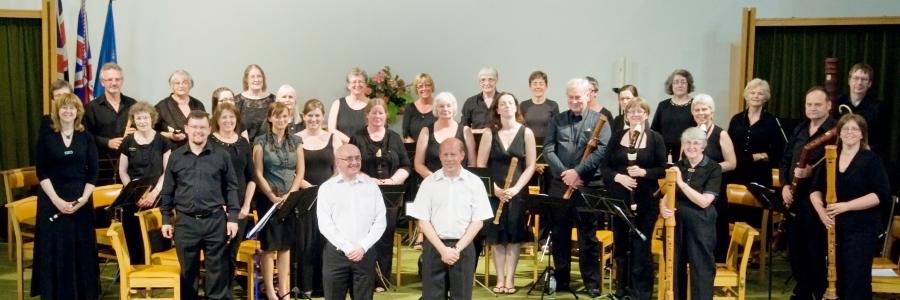
To be honest I wasn’t sure what to expect before attending the Orchestra’s 18th appearance at the Buxton Fringe. Reports I had heard from previous attendees were glowing, but as a novice recorder player myself, many years ago, I could not envisage hearing anything too technical or challenging. The forty strong Orchestra comprising all age groups and recorder sizes were about to show me how wrong I was! The concert opened by conductor David Walsh, started with March Knight Templar, a piece originally written for a brass band, but now arranged for the recorder. It provided a suitably rousing and impressive start to the concert, evoking for me the strains of an old fashioned carousel at points.
The Allegretto, from Beethoven’s 7th symphony followed. I have heard this piece many, many times, but this Orchestra gave it a fresh perspective. Pitch perfect throughout, I felt quite emotional as the movement gently swelled to its conclusion. I don’t think I will ever hear this again without thinking about this specific performance.
The third piece on the programme was The Fipple Dance, written specifically for a recorder orchestra. Unusually the Composer, Glen Shannon wrote the piece using the Orchestra member’s voices as percussion pieces in their own right. The orchestra alternately wove their own clicking and hissing between their playing. This must have been technically very difficult, but sounded effortless in their execution.
Beethoven’s Egmont Overture brought the first section to a close, made all the more enjoyable by a short history of the piece given by David Walsh explaining how it related to the independence of the Netherlands and a real life person called the Count of Egmont, whose execution led to an uprising.
After a brief interval where refreshments were served and the audience and the Orchestra mingled, the second half began, this time with Ian Chesters taking the baton.
He explained that the evening’s programme had been agreed some months before and that when deciding on pieces the orchestra aims to balance recognisable pieces with newer or unknown work written specifically for the recorder.
All the pieces in the second half fulfilled the latter criteria. If you are someone who groans at the thought of listening to newer or unknown work be assured the second half of this concert easily matched the first in terms of enjoyment and content.
Passacaglia by Eileen Silcocks was first up. Described as variations on a bass lane repeated throughout, this was actually my favourite piece of the evening. The contrasts of tone gave the music a haunting quality, added to by the fact that the Composer had only passed away six weeks previously. It was presented as a tribute and certainly was played as such.
The next two pieces were introduced by the Composer himself, Raymond Head. He told the audience that he had been so impressed by the Manchester Recorder Orchestra’s skill and expertise that he had accepted a commission to write a piece to celebrate the Orchestra’s 35th Anniversary. Ikon, the first of two pieces was inspired by seeing the fantastic mosaics in Sicily at Palermo and Monreale. He described them as awe inspiring and his composition when played captured the spiritual and was gentle and soaring in equal measure.
The following piece Rondo all Danza was described as being relaxed and jolly and it was indeed uplifting and lively – like all the pieces on the programme it provided a fitting counterpoint to the preceeding piece. Both the Composer and the Orchestra got a well deserved ovation at the end of this section.
The Orchestra closed the concert with a Symphony in four movements by Mike Sammons. This well chosen finale showcased the Orchestra’s range and skill.
I am so pleased I got to see this Orchestra. They have proved to me that the recorder, far from being a one dimensional instrument, is every bit as impressive as for example a violin in the hands of a skilled musician. I will definitely be returning for more.
April Irwin
SUMMER SHOWCASE - Buxton Studio Choir
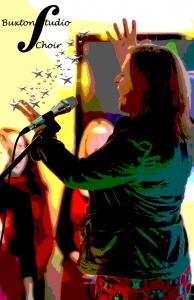
This was a performance that delighted an audience of more than 200 in the magnificent setting of St John’s Church.
On this occasion 40-plus members of Buxton Studio Choir were joined by a number of guest performers and ensemble singers and together they entertained with a real showcase of songs.
The first set opened unexpectedly with ‘Care Selve’ an aria by Handel sung by Lindsay Rolland and the audience were immediately entranced.
Janet Galloway then took centre stage to sing ‘I still haven’t found what I’m looking for’ and was joined by the full choir; this was followed by an acapella version of ‘Sweet Dreams’ and then ‘Something Stupid’ accompanied by the guitar.
Rosie Scarlett-Hallam sang a beautiful solo accompanying herself on the keyboard. Eleanor Gallant also sang a solo and was joined by two others to sing a three part harmony called ‘Jar of Hearts’. The choir then sang ‘All I have to do is dream’ and Cohen’s ‘Hallelujah’ and the full student choir finished with ‘Somewhere only we know’
The second set saw Janet take the stage again with ‘Lean on Me’ accompanied by the choir followed by ‘Can’t help falling in love’ and ‘Something inside so strong’. Freyja Barrett opened ‘I have a dream’ for the ensemble choir which expanded into the full choir and Karina Booth entranced us all by singing a marvellous acapella stage song. Oliver Hawley’s touching spiritual song from the pulpit had the audience captivated and Benjamin and Kel opened a version of Coldplay’s ‘Fix You’ which had some choir members and elements of the audience almost in tears! The set finished with ‘Higher and Higher’ and after a standing ovation the encore ‘Bring me Sunshine’ sent everyone home happy.
This is a community choir (no auditions!) led by Janet Galloway who is a highly experienced musical director and its members have been working towards this concert since an early experimental version in March at the United Reformed Church and they have most certainly stepped up their game. This choir has truly arrived on the Buxton music scene.
Pam Mason
TANGO & RUMBANGO! FLUTE & PIANO RECITAL - Rachel Johnson & Jemima Palfreyman
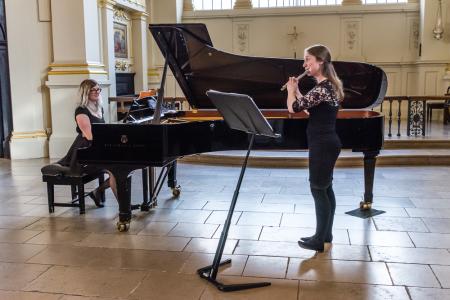
Rachel and Jemima are in their fifth year as a performing duo and their appearances at the Buxton Festival Fringe have earned them loyal and enthusiastic audiences. Apart from public recitals they are also engaged in outreach programmes that includes working with children.
For this recital they presented two pieces - both summery and with jazzy elements. The Argentinian composer Astor Piazolla is now well-known to European audiences and his Histoire du Tango (1986) is in four movements. The first, Bordel 1900, provides a brisk and gay introduction which includes percussive elements obtained from knocking on the piano casing. Cafe 1930 begins with a moody, late night feel to it - as if reflecting wistfully on the day’s events. A brief animated episode suggests a sudden excited recollection. The movement reaches a slightly romantic conclusion - a reverie almost. The Duo sound as though born to play this music.
Nightclub 1960 is, perhaps, the most ‘tangoish’ of the movements with lush and seductive themes mixed with fast dance rhythms. The final movement, Concert d’aujourd’hui, is more angular and harsh at the outset - the short and frenzied rhythms are danceable (but with care!)
The second piece Sonata Latino (1994) by the contemporary composer Mike Mower is in three movements. The music borrows from Latin American forms without pretending to be authentic. The opening Salsa Montunate is vigorous and gives each instrument brief solo passages where they call and respond in jazz and blues style. Jemima (piano) gets to stand and investigate the inside of the piano.
The second movement - Rumbango - gives us half the title for the recital. It starts in a reflective free style before the piano establishes the rhythm which is deliberate and insistent. The final movement is a Bossa Merengova that requires the nimblest of dancing feet. The jazziest music in the Sonata it was great fun to hear. The flute is effectively the lead instrument for much of this music - a responsibility which Rachel carries off with aplomb.
This was a programme of technically demanding music but it was written to be enjoyed rather than admired and it is a tribute to Rachel and Jemima that they gave another thoroughly enjoyable recital for Buxton Fringe audiences.
Keith Savage



